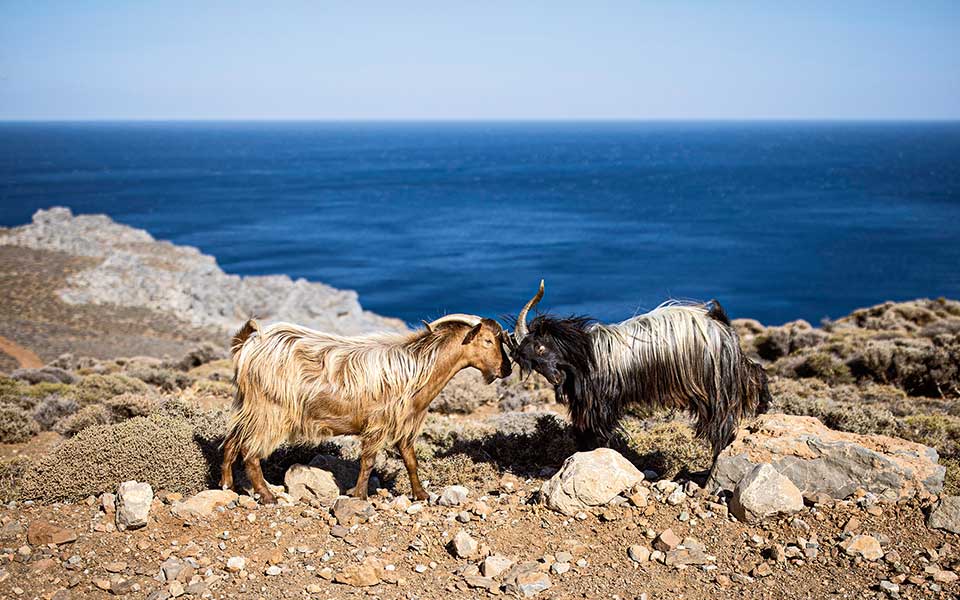Life in southern Irakleio’s Asterousia region is very different from life in north Crete, and residents want it to stay that way. Instead of merely asking for peace and quiet, they propose an alternative, forward-looking development model that offers a meaningful, timely and vital path for the future, especially in the case of Greece, where the countryside has been deserted, production has been abandoned, and tourism has distorted landscapes and people over decades of failed tactics.
It’s a message advocating for the preservation of a way of life as well as the means to promote it. The Asterousia Mountains, with their rugged terrain full of steep slopes, gorges, towering cliffs, and endless miles of dirt roads, are an isolated wilderness. On the south side, there are only a few villages whose inhabitants are primarily involved in farming, beekeeping, and, to a lesser extent, salt production, olive cultivation, and fishing.
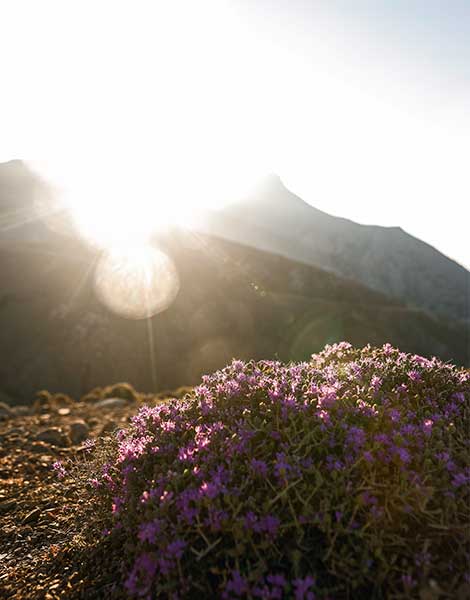
© Dimitris Tosidis
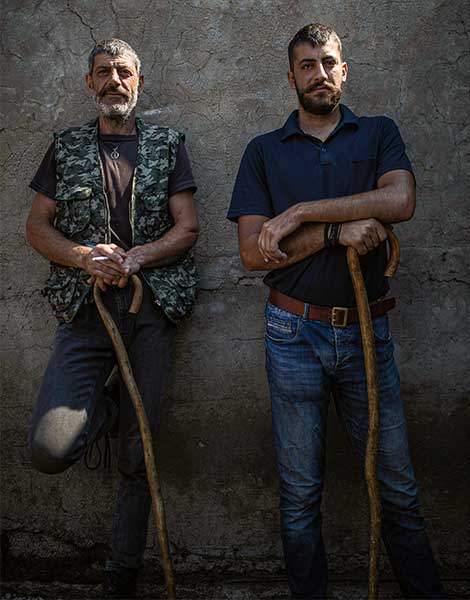
© Dimitris Tosidis
Sixteen years ago, Markos Skordalakis established Thalori, a guesthouse-restaurant in the abandoned village of Kapetaniana. He painstakingly restored the old buildings and cultivated the farm. His first customers were passersby who became curious when they saw him working in the ruins. “I would tell them, ‘Now sit here and have some tsikoudia, because I don’t know what I’m doing here either,’” he reminisces. His audacious venture was a success: the guesthouse expanded and the farm thrived, eventually allowing him to become self-sufficient. Everything was made possible by his unwavering belief in the lifestyle he desired for himself.
“I grew up in Irakleio, but I have always been drawn to nature, village life, people and their ways. I used to visit the Asterousia because I knew this was where I belonged. People shouldn’t be confined within four walls. Everyone is involved in the transmission of information, but you can’t get anywhere without production,” Markos reflects. He tends to over 300 goats and sheep, as well as horses, rabbits, and chickens. In fact, he and some of his fellow farmers are working to resurrect the indigenous Asterusian red sheep breed. “Aside from their superior meat quality, these animals thrive here with little intervention. They do not get sick here, so you don’t have to pump them full of medicine. The same is true for crops: if you want to grow mangoes in an area suitable for carob trees, you will waste your entire time spraying pesticides on them. We have forgotten the basics,” he observes.
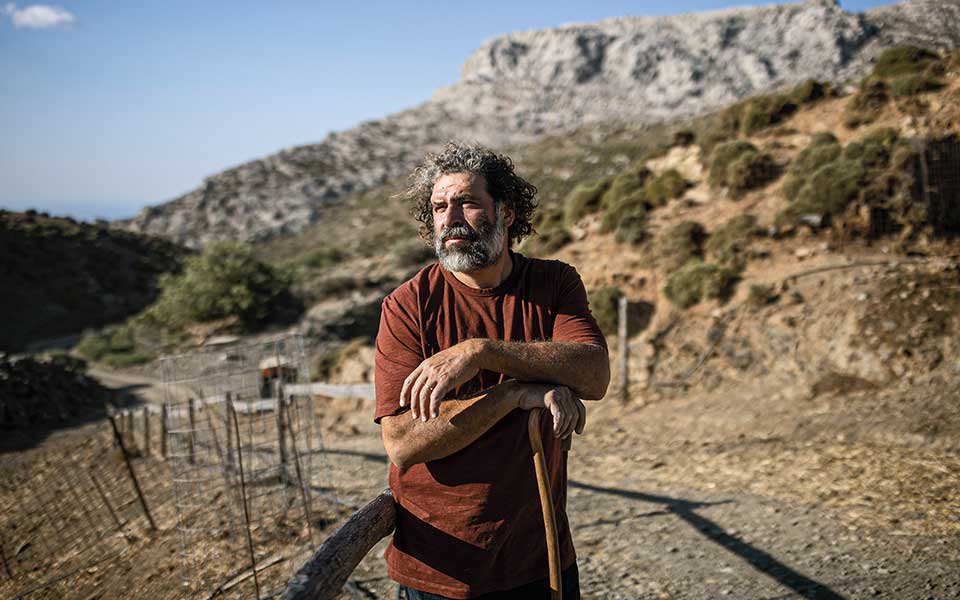
© Dimitris Tosidis
His vision for agritourism for the entire region evolved naturally as visitors watched him work. He added tours and outdoor activities to the experience. “It’s a tough place, with no infrastructure. Investors expect their money back in five years. We are talking about a way of life here: people should be able to stay in the villages and do what they do best with love and dedication. If you don’t know how to make cheese, how will you teach others?” he concludes.
The residents of Kapetaniana supported him because they knew he meant well. When I ask how many people live in the village, he says, “Fifty people. At least that was the count yesterday; I haven’t checked today,” he says, laughing. Markos playfully teases the elderly villagers, but he genuinely cares about them. He also travels to neighboring villages, encouraging young people to stay and work in the region. He is more than a businessman; he works hard and truly cares. By engaging with visitors from all over the world, he gains knowledge and invites experts to help him with his mission. He rises early to tend to the animals, milk them, make cheese, play with the horses, and prepare the meat for the restaurant. At the same time, his wife Poppi works hard in the kitchen and the guesthouse with the nurturing touch and care that Cretan women are known for.
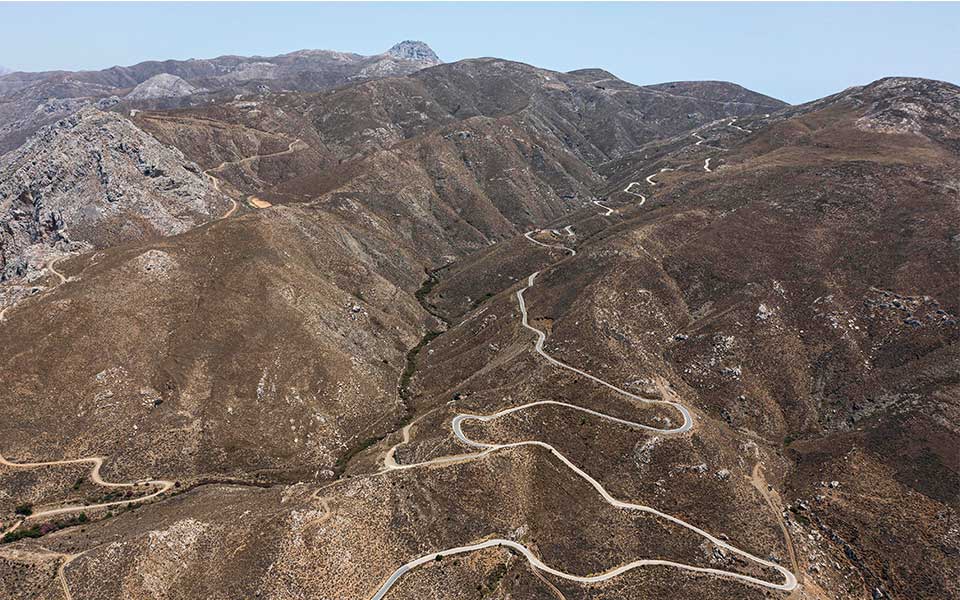
© Dimitris Tosidis
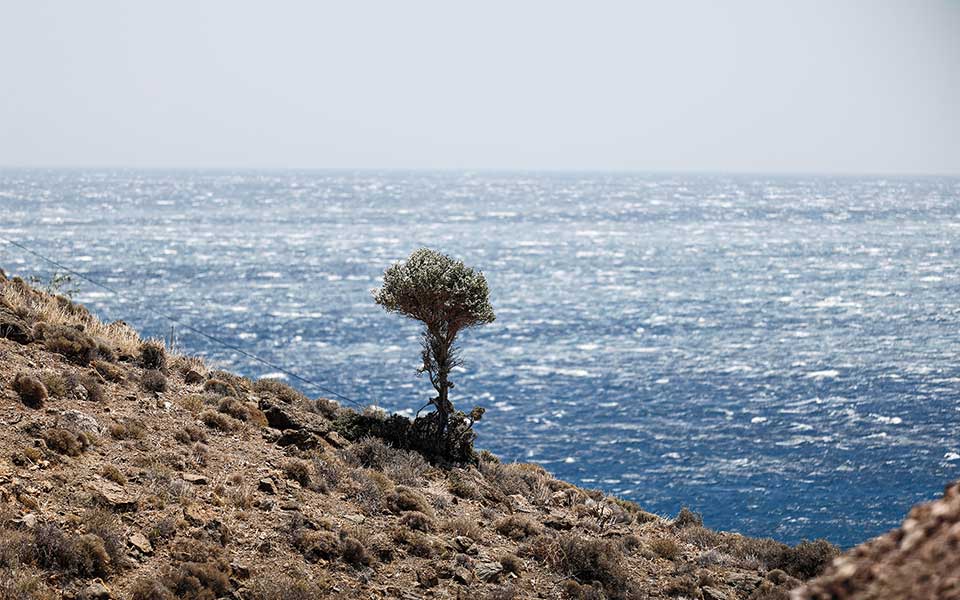
© Dimitris Tosidis
With the approval of UNESCO
The inclusion of the Asterousia mountain range in the “Man and the Biosphere Programme” demonstrates UNESCO’s support for this philosophy. “UNESCO acknowledges that the Asterousia, spanning 367 square kilometers, including the coastal and marine areas of the South Cretan Sea, represent a valuable ecosystem and community that must be preserved in order for both to coexist harmoniously,” states Theano Vrentzou, President of the Local Management Committee of Asterousia and the mother of Markos Skordalakis.
In 2020, the Asterousia were included in a list of 700 international sites, along with two other Greek sites, Mount Olympus, and the Gorge of Samaria. These Biosphere Reserves, often referred to as “natural laboratories,” promote research, education, and local participation, in order to foster long-term economic development. “The Biosphere Program brings humanity and the environment together. Our goal is to promote repopulation, ecotourism, production, and manufacturing in the Asterousia region, with a focus on sustainability,” he explains.”The management plan includes initiatives such as the planting of productive carob trees, the reduction of the goat population, and the management of marine litter. The goal is to protect the environment and its cultural elements while also strengthening the community. People will enjoy the benefits while also fully honoring and preserving them. As a result, the most important thing is to inform and educate residents,” he concludes.
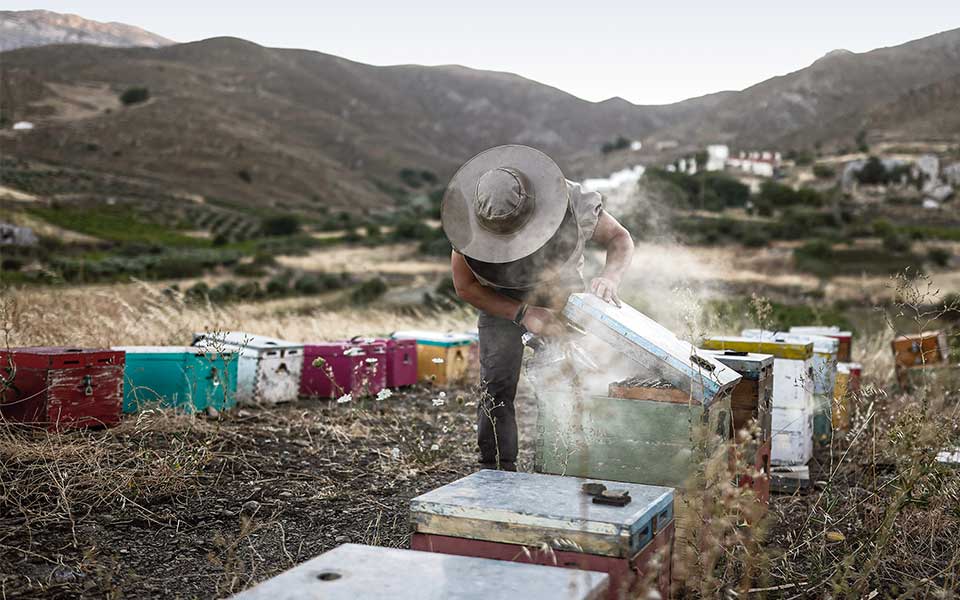
© Dimitris Tosidis
The Asterousia, Europe’s southernmost mountain range, is a truly unique place. This ecosystem, most of which is under the protection of the Natura 2000 network, is home to over 1,800 plant species, many of which are endemic to Greece or Crete. The area is teeming with wildlife, including birds of prey like the golden eagle, spotted eagle, griffon vulture, and buzzards, all of which find crucial refuge here. Furthermore, the marine trench is home to blowers, seals, dolphins, and sea turtles, adding to the region’s ecological diversity. Notably, the Asterousia are home to the only two remaining pairs of the critically endangered bearded vulture, locally known as the cockatiel.
We saw the elusive bearded vulture soaring ahead us, battling powerful gusts of nine Beaufort winds that made it difficult to even stand upright. It deftly dropped bones from above, shattering them on the rocks before devouring the pieces. We also saw deep gorges like Mesosfini, Tripiti, and Amba, barren slopes adorned with thyme shrubs, Kofina’s 1,230-meter peak, imposing cliffs and canyons, caves, and unspoiled beaches. We drove down winding dirt roads, past solitary trees bent from the north winds. We came across isolated chestnut trees, small pine forests near Koudoumas Monastery, and groves of Theophrastus palm trees around Aghios Nikitas Monastery, lonely remnants of the vast pine and carob forests that once blanketed the Asterousia before the Ottoman occupation.
Settlements appear to be few and far between in this captivating landscape. In the southern part of the mountain, there are ten villages, as well as small, straggling settlements like Maridaki and Three Churches on the coast, and caravan parks like the one on Tripiti Beach. Countless Minoan sites, such as the Koumasa settlement and the Minoan tomb-chapel of Panagia Martsaliotissa, dot the landscape, as do archaeological sites such as Lentas, where ancient Levin was excavated, and the harbor of ancient Gortynas, which featured an Asclepieion, a psychiatric hospital, and a hydrotherapy center. Customs such as the mesmerizing tree worship ceremony, held during the Feast of the Cross next to the Minoan sanctuary of Kofinas, with its three sacred apple trees, add to the region’s distinct character.
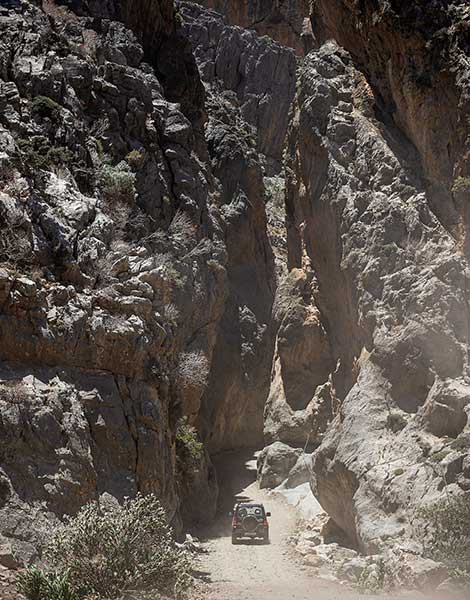
© Dimitris Tosidis
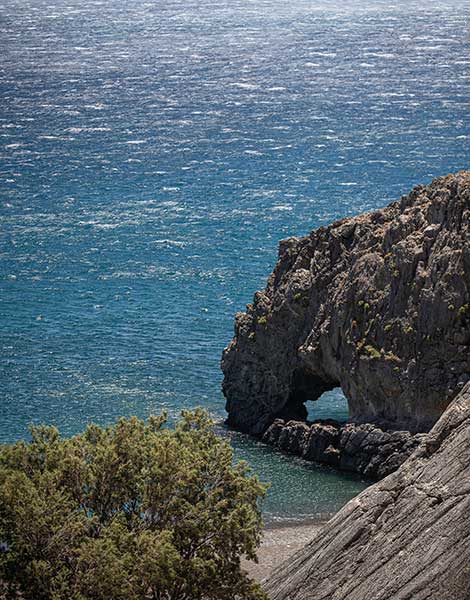
© Dimitris Tosidis
Asceticism – Monasticism – Meditation
Both locals and visitors describe an extraordinary energy.”It’s a complicated place that gets into your head,” Markos observes. “You feel elevated in one place and grounded in another.” It is no coincidence that asceticism plays such an important role here.
For centuries, the seclusion of this region has drawn ascetics seeking peace, as well as dissident theologians and contemporary spiritual leaders who have established faith centers that are still active today, such as the monasteries of Koudoumas, Odigitrias, and Apezanon.
Since the 5th and 6th centuries, Agiofarago, the area’s most beautiful beach, has served as a cradle of asceticism. The ascetics, gaunt and dressed in tattered garments, with long, unkempt beards, lived on olives and gathered once a year in Goumenospilio. According to tradition, the Asterousia served as a bridge that facilitated the passage of monasticism from East to West, as the ship carrying the Apostle Paul to Rome is said to have docked at Kalous Limenes in 61 AD. Monasticism is still present in Kapetaniana, where a monastery once stood near the church of Panagia Kyrie Eleison. In the 14th century, Joseph Philagrios moved to Kofina and established the Monastery of the Three Hierarchs, known as Crete’s first school. “Monks and scholars gathered there to study philosophy and the monks developed the Silent Prayer, a meditation technique later adopted by the monks of Mount Athos,” explains Markos. The cave monastery of St. John is also unforgettable. Adorned with frescoes both inside and outside, the structure was built on top of an ancient Asclepieion, as evidenced by its layout, inscriptions, depictions of doctor-saints, and the survival of the ancient practice of incubation (dream therapy) in the area until the 1980s.
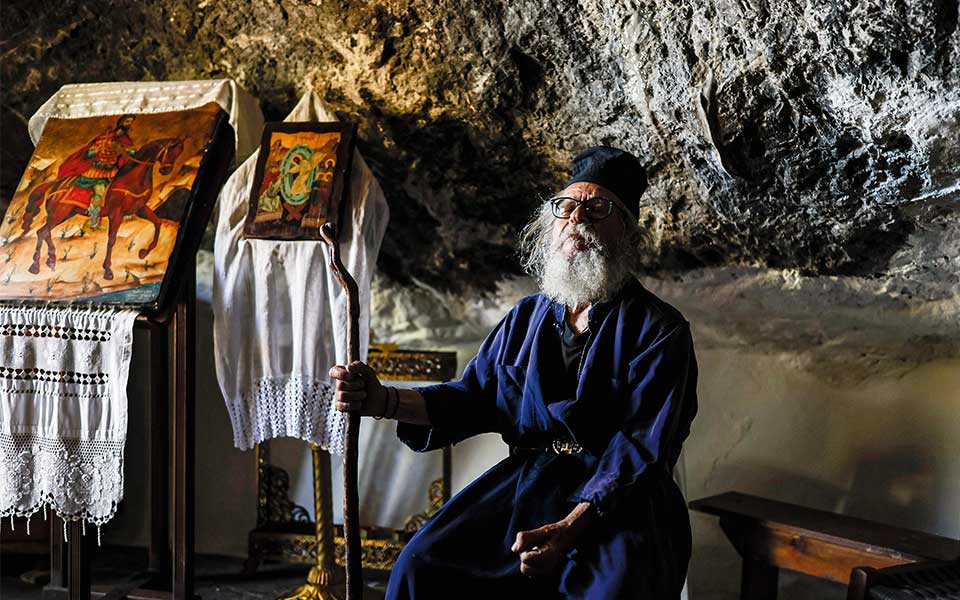
© Dimitris Tosidis
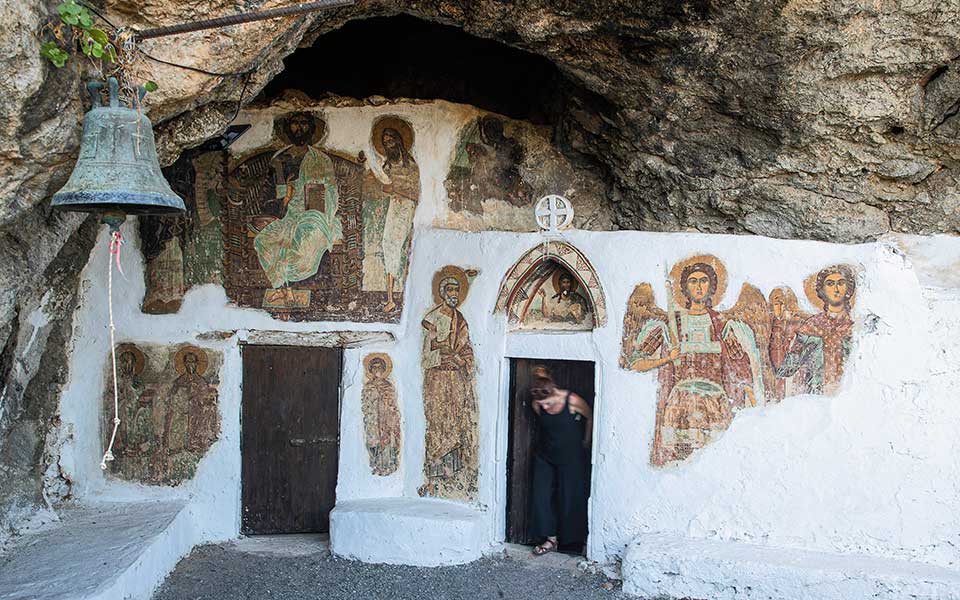
© Dimitris Tosidis
The Day After
Asceticism seems to continue in another form. Visitors come here to engage in solitary pursuits, to find peace, and to commune with nature and themselves. Zbynek Cepela, a 76-year-old Czech who arrived in the region in 1982, was one such visitor. In 2005, he made Kapetaniana his permanent home after establishing the first climbing routes.
The area is becoming increasingly popular among climbers, hikers, birdwatchers, and canyoning athletes. Abasboasts one of Europe’s tallest waterfalls, measuring 160 meters in height. Fishing tourism is also popular, particularly in the tourist destination of Lentas. Given its potential, the area deserves to be developed further. Several studies have been proposed to that effect, including one for the hiking network in collaboration with Stefanos Psimenos, one for climbing areas in collaboration with Aris Theodoropoulos, and one for birdwatching sites in collaboration with Christos Vlachos.
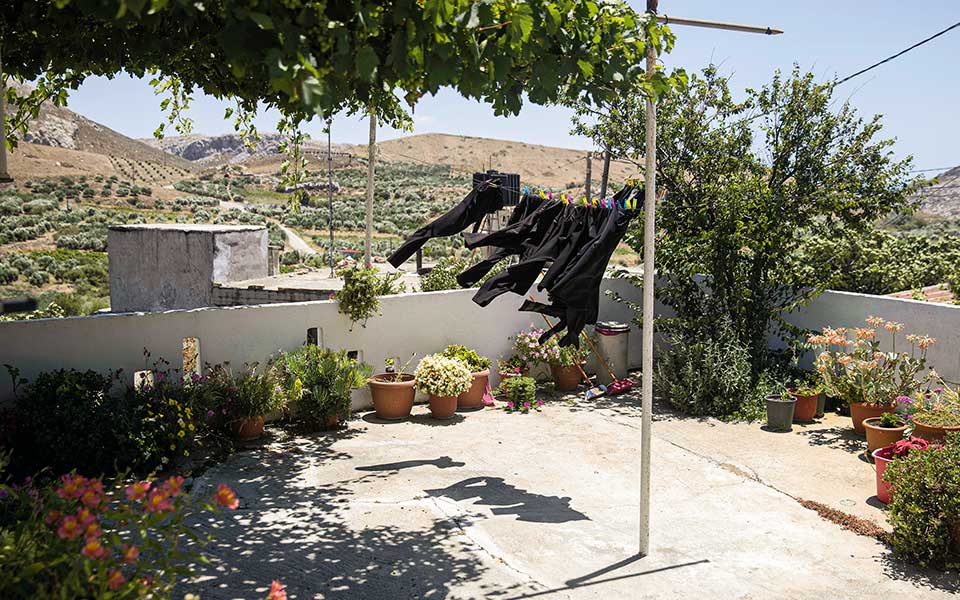
© Dimitris Tosidis
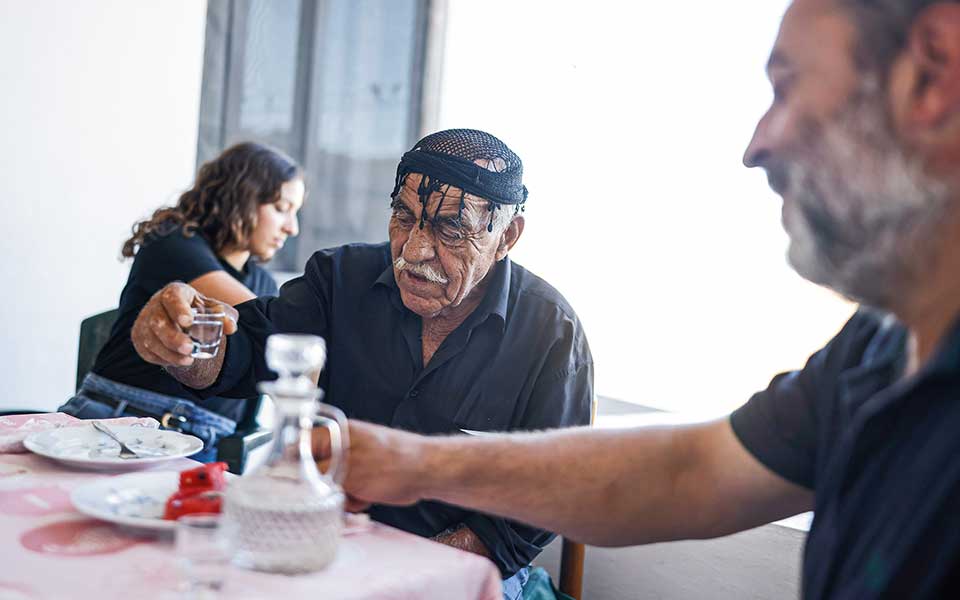
© Dimitris Tosidis
The locals, on the other hand, wish to remain in the area. 25-year-old Babis Giachnakis works alongside his father Yannis tending the animals and has no intention of leaving the area; in fact, he is about to open a café in Kapetaniana. Stelios Pantechakis, a young beekeeper, also cultivates olive trees on the mountain’s north side. The Strataridakis brothers, both agronomists, manage their vineyard a bit farther away, in Kasteliana.
The ten devoted monks at Koudouma Monastery are still keeping the faith alive, and elder Nikitas has been asking visitors to light candles at the Monastery of St. Nikitas before heading down to the breathtaking beach for the last 17 years. Soula at the taverna in Aghios Ioannis serves food made entirely from ingredients sourced from local producers and fishermen, foregoing variety in favor of quality and sustainability. Despina has reopened the legendary café in Ethia, a village that has been meticulously restored and repopulated.
In Paranymphous, the Michelakis family is striving to maintain a farming tradition that goes back five generations. Manolis is laying the groundwork for his daughter Faye, a high school student aspiring to transform their vineyard and livestock unit into a thriving agri-tourism venture. Mrs. Frosini, her grandmother, shares an array of treats, including her homemade raki and cheese, while Mr. Michalis, her grandfather, offers a rhyming couplet that expresses the isolation of the Asterousia: “I am alone with my loneliness but I don’t mind/the sun is alone too but every day it shines.” The extent to which the actions of a small group of people can influence the future of an entire region remains to be seen.

